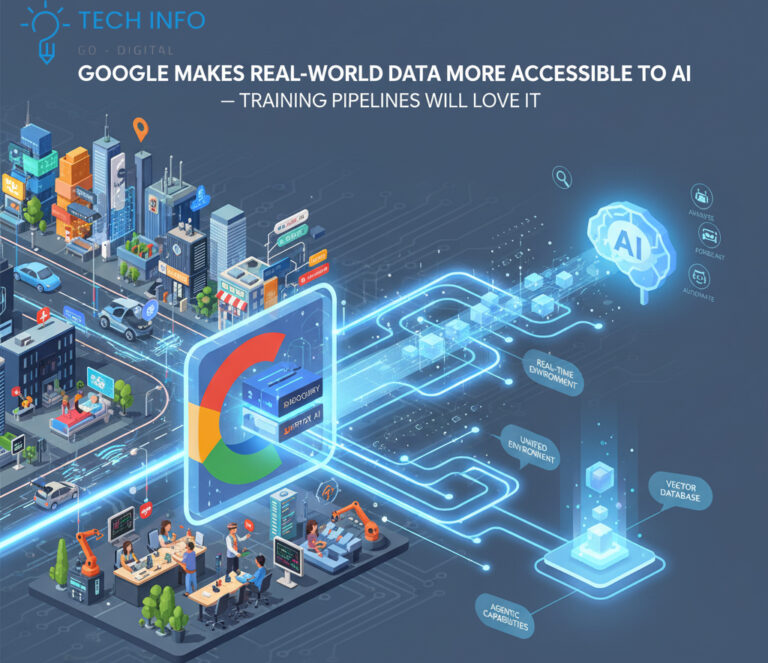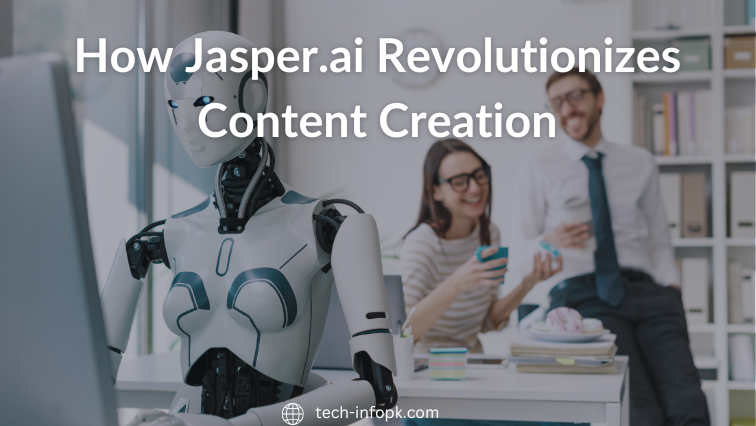Table of Contents
ToggleGoogle Throws Open the Vault: How Unlocking Real-World Data Will Supercharge AI Training Pipelines
The age of AI trained solely on vast, scraped internet datasets is evolving. While the web has been the lifeblood of large language models and computer vision systems, it comes with inherent limitations: noise, bias, duplication, and a lack of grounding in the physical world we inhabit. The next great leap in artificial intelligence hinges on moving from the virtual to the real.
A recent and pivotal move by Google signals this shift is accelerating. By making real-world data more accessible to AI systems, Google isn’t just offering a new dataset; it’s fundamentally upgrading the fuel that powers the entire machine learning engine. And for the engineers and data scientists who build and manage AI training pipelines, this isn’t just an incremental improvement—it’s a revolution they will unequivocally love.
What Does “Real-World Data” Actually Mean?
Before diving into the “why,” let’s clarify the “what.” When we talk about real-world data in this context, we’re moving beyond text and images from the public web. We’re talking about data that reflects the complex, multi-sensory, and structured nature of reality. This includes:
- Geospatial and Temporal Data: High-resolution satellite imagery, real-time traffic patterns, historical weather data, and urban infrastructure maps.
- Physical World Interactions: Anonymized and aggregated data from sensors, IoT devices, and mobility systems (e.g., vehicle movement patterns, energy grid load).
- Structured Human Knowledge: Databases of scientific research, historical records, and economic indicators that are clean, verifiable, and rich with context.
- Multi-Modal Real-World Events: Data that combines video, audio, and sensor readings from real environments, like a warehouse robot navigating a space.
This is data with provenance, context, and a direct link to measurable outcomes. It’s the difference between training a model on a million captioned internet photos of “a busy street” and training it on sensor data from a thousand actual city blocks, complete with vehicle counts, pedestrian flow, and traffic signal timing.
Why Training Pipelines Are Starving for This Data
AI training pipelines are the intricate assembly lines of machine learning. They are responsible for data ingestion, cleaning, labeling, augmentation, model training, and validation. The single biggest bottleneck and source of fragility in any pipeline is the quality and relevance of the data it’s fed. Here’s why Google’s move is a game-changer for these critical systems:
1. The End of Synthetic Data’s Shortcomings?
When real-world data is scarce or expensive to label, pipelines often rely on synthetic data—computer-generated simulations. While useful, synthetic data has a known problem: the “sim-to-real gap.” A model trained perfectly in a simulation often fails when faced with the messy, unpredictable real world. By feeding pipelines rich, diverse real-world data, we can close this gap dramatically. Pipelines can now produce models that are robust and reliable from day one, reducing the need for extensive and costly fine-tuning after deployment.
2. Supercharged Data Augmentation and Generalization
Data augmentation—creating new training examples by altering existing ones—is a core function of modern pipelines. Traditionally, this means flipping images or adjusting colors. But with access to real-world datasets, augmentation becomes far more powerful. A pipeline could take real geospatial data and simulate the effects of climate change, or use real traffic patterns to model the impact of a new road. This leads to models that don’t just recognize patterns but understand underlying systems, resulting in vastly improved generalization to unseen scenarios.
3. Taming the Bias Demon
Bias in AI often stems from biased training data. Internet data can over-represent certain demographics, viewpoints, and environments. Real-world datasets, particularly those curated with care (like diverse geospatial information), can provide a more representative view of the world. Training pipelines that ingest this data can produce fairer, more equitable models. For pipeline engineers, this means fewer headaches in the model auditing and fairness-testing stages downstream.
4. Grounding LLMs in Reality
Large Language Models are notorious for “hallucinating”—fabricating facts with confidence. This is a direct result of being trained on the contradictory and unverified expanse of the internet. By integrating real-world structured data—like verified scientific databases or historical archives—into their training pipelines, developers can create grounded LLMs. These models would anchor their responses in factual, real-world context, making them infinitely more valuable for fields like medicine, law, and engineering.
The Google Advantage: Scale, Tools, and Integration
Google’s announcement isn’t just about releasing data; it’s about integrating it into an ecosystem that pipelines already use. Imagine:
- Seamless Access via BigQuery: Data scientists could query massive, real-world datasets directly within BigQuery, joining them with their own proprietary data as easily as running a SQL query. The pipeline’s data ingestion stage becomes trivial.
- Pre-processed for Immediate Use: Google is likely to offer this data cleaned, pre-labeled, and structured in AI-ready formats (like TFRecords). This eliminates the most labor-intensive and error-prone stages of the pipeline: data cleaning and labeling.
- Tight Coupling with Vertex AI: Within Google’s Vertex AI platform, this data could be directly fed into AutoML systems or custom training jobs, with built-in tools for fairness evaluation and explanation, all powered by a more robust data foundation.
A New Paradigm and Its Responsibilities
This shift is not without its challenges and ethical considerations. Making real-world data more accessible raises immediate questions:
- Privacy and Anonymization: How is personal data aggregated and anonymized to prevent re-identification? Google will need to be transparent about its techniques.
- Access and Equity: Will this create a two-tiered AI ecosystem, where only well-funded companies can afford high-quality real-world data? Google’s pricing model will be critical.
- Environmental Impact: Training on even larger, more complex datasets requires significant computational resources. The industry must continue to advance energy-efficient model architectures and hardware.
The Future is Grounded
For AI to truly serve humanity, it must understand the world as humans experience it—a world of physical laws, social interactions, and environmental systems. By unlocking its vaults of real-world data, Google is providing the key to a new generation of AI.
For the training pipelines that form the backbone of modern AI development, this is the upgrade they’ve been waiting for. It promises more robust models, less brittle performance, and a faster path from prototype to real-world impact. The era of AI living solely in the cloud is ending; it’s now coming down to earth, and the results will be transformative.





